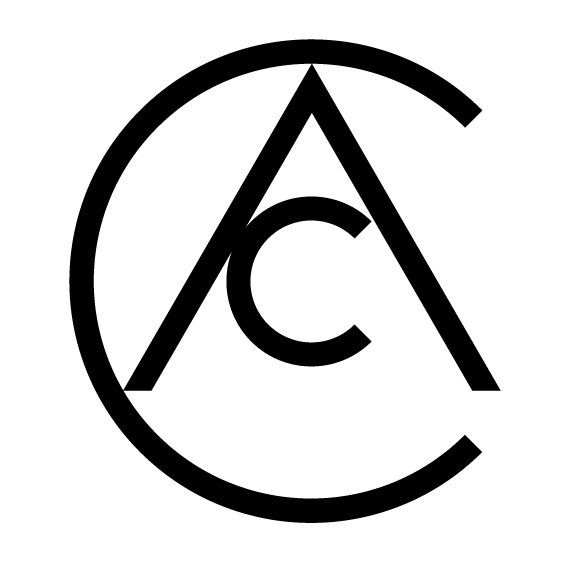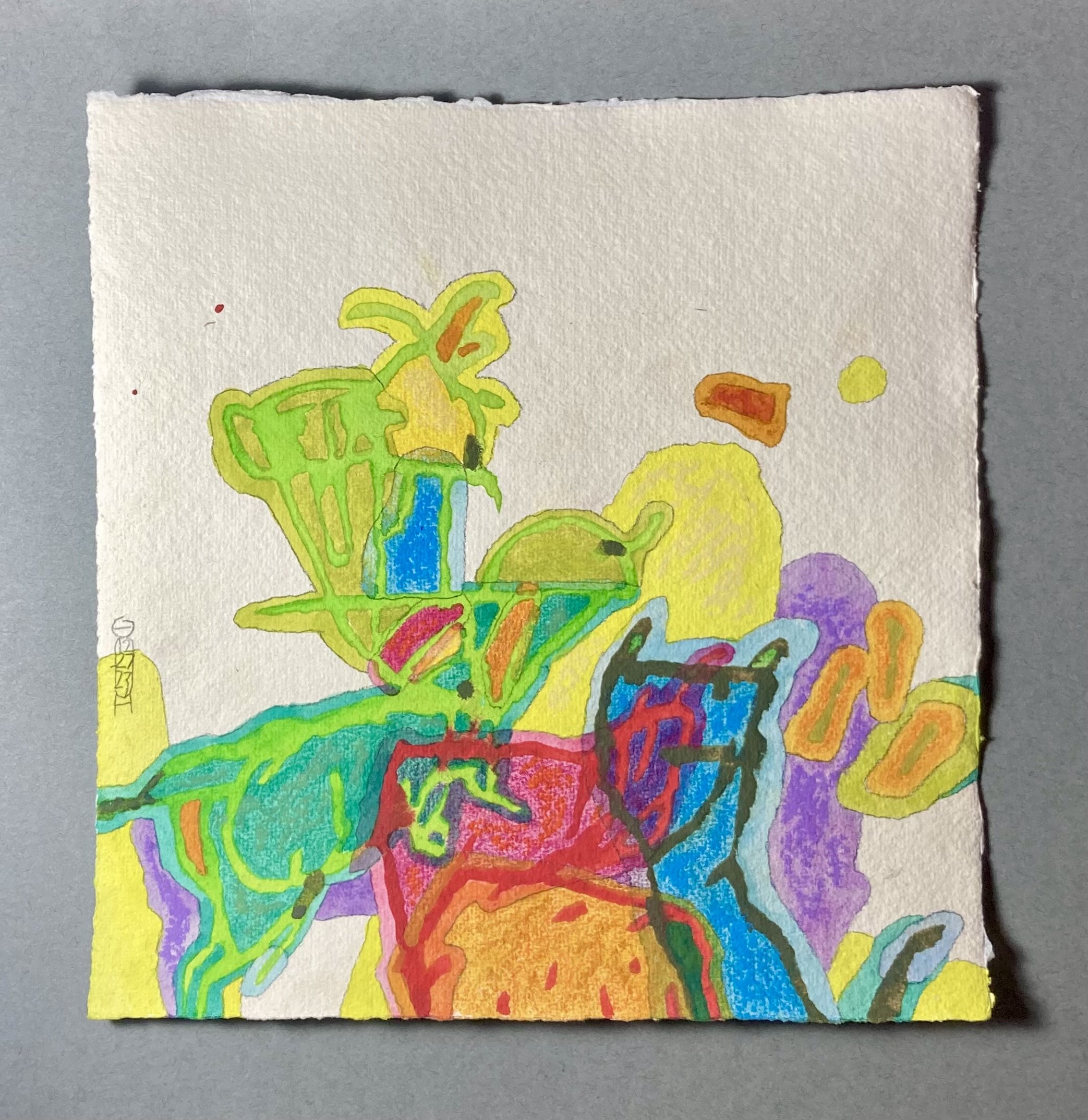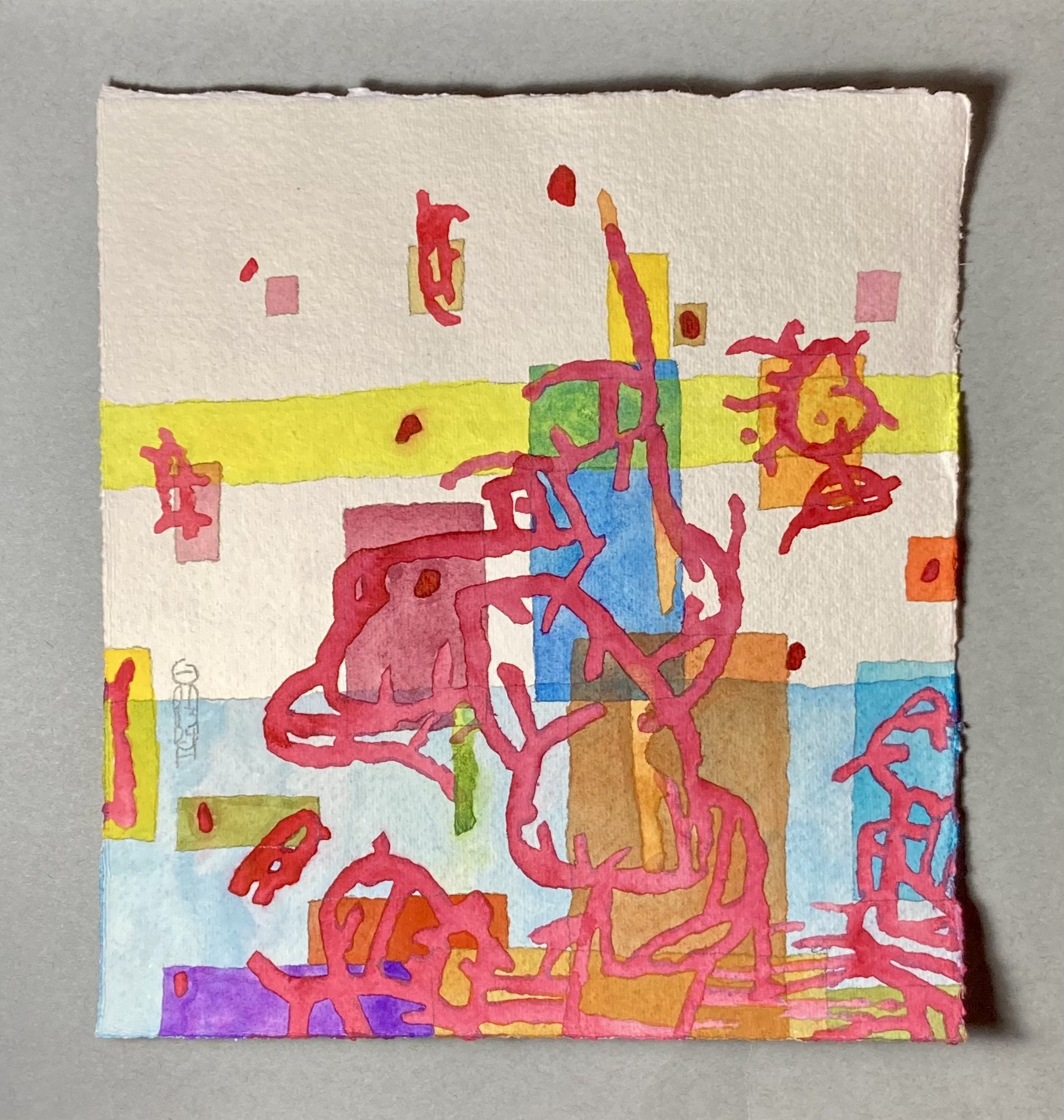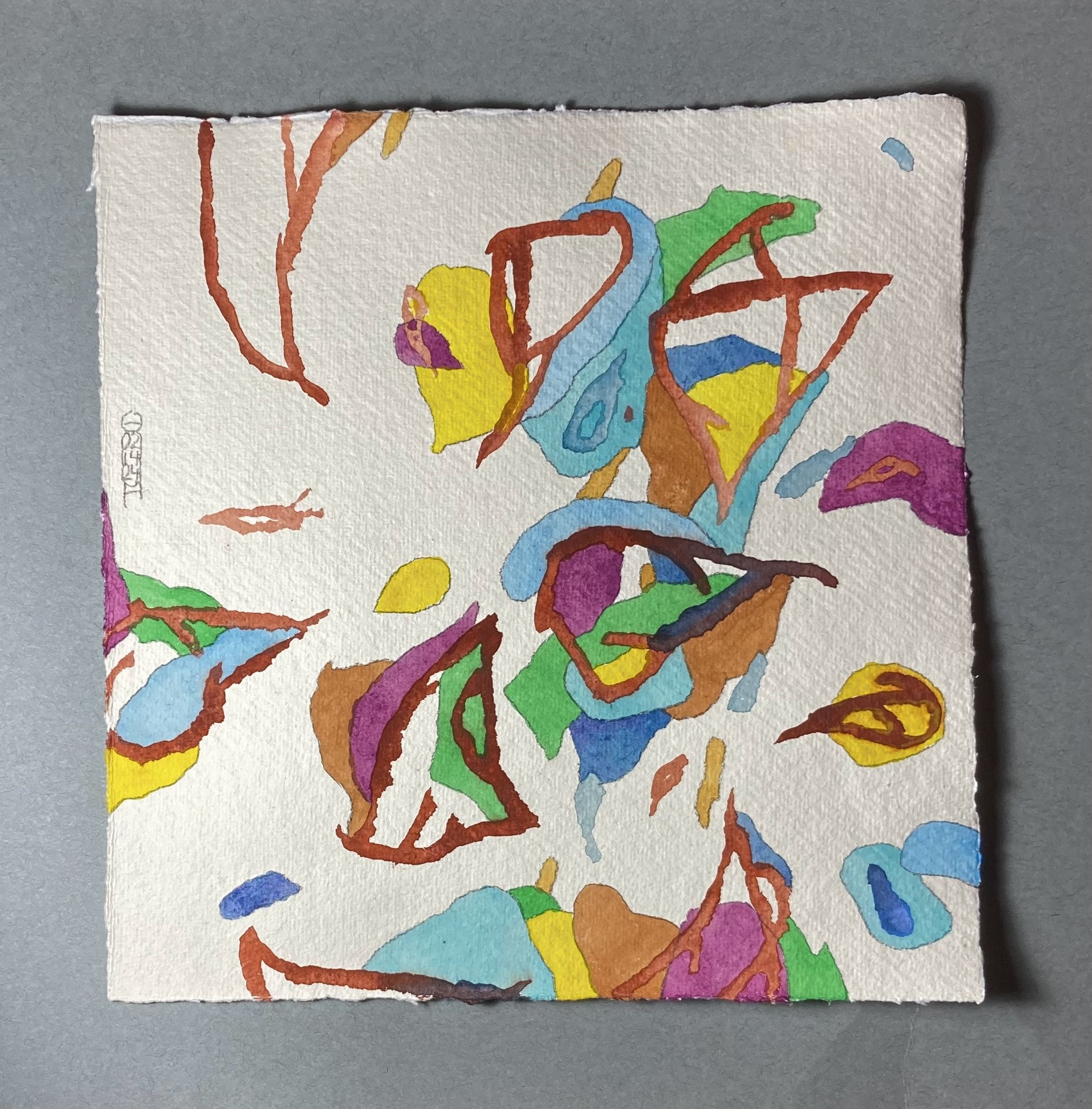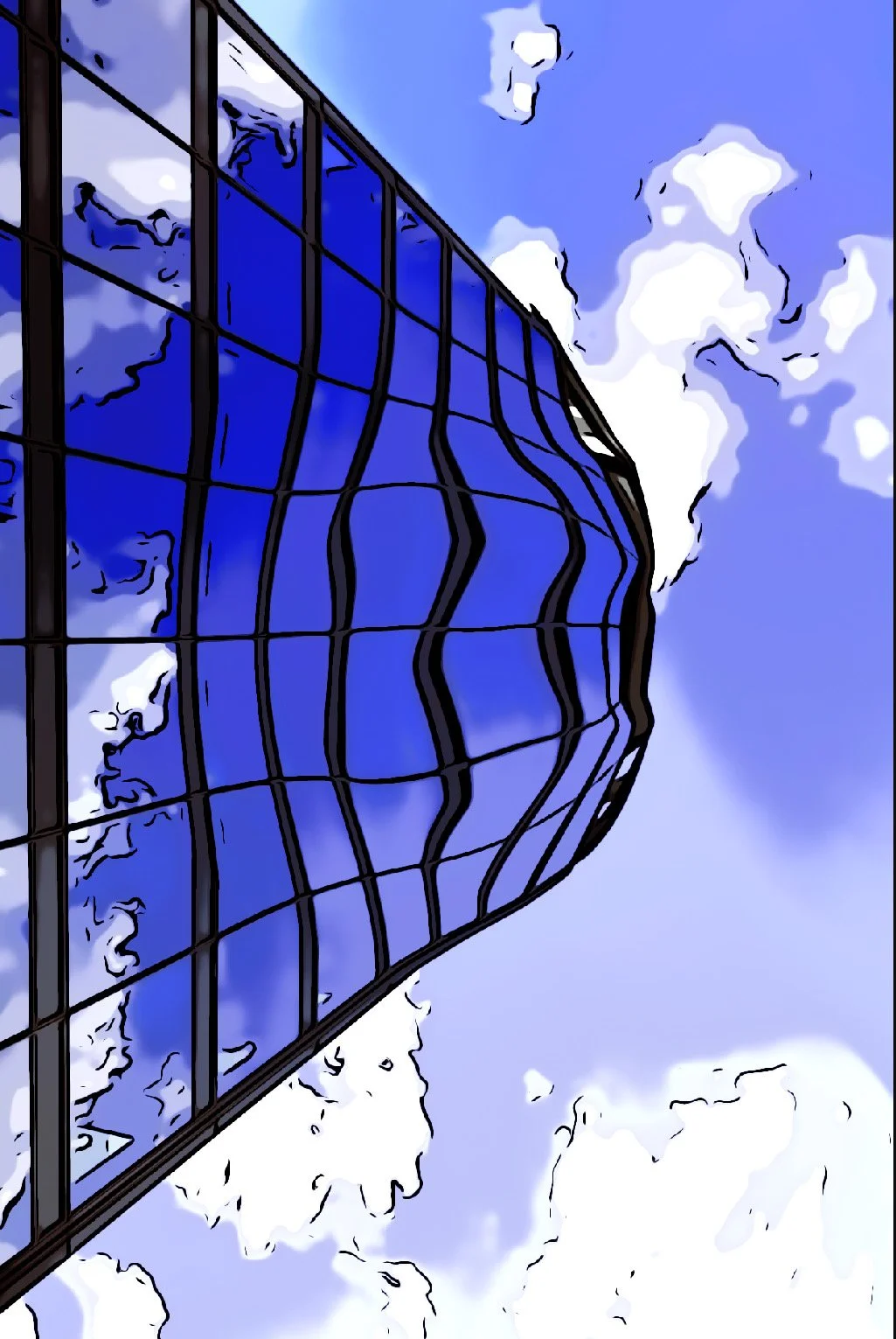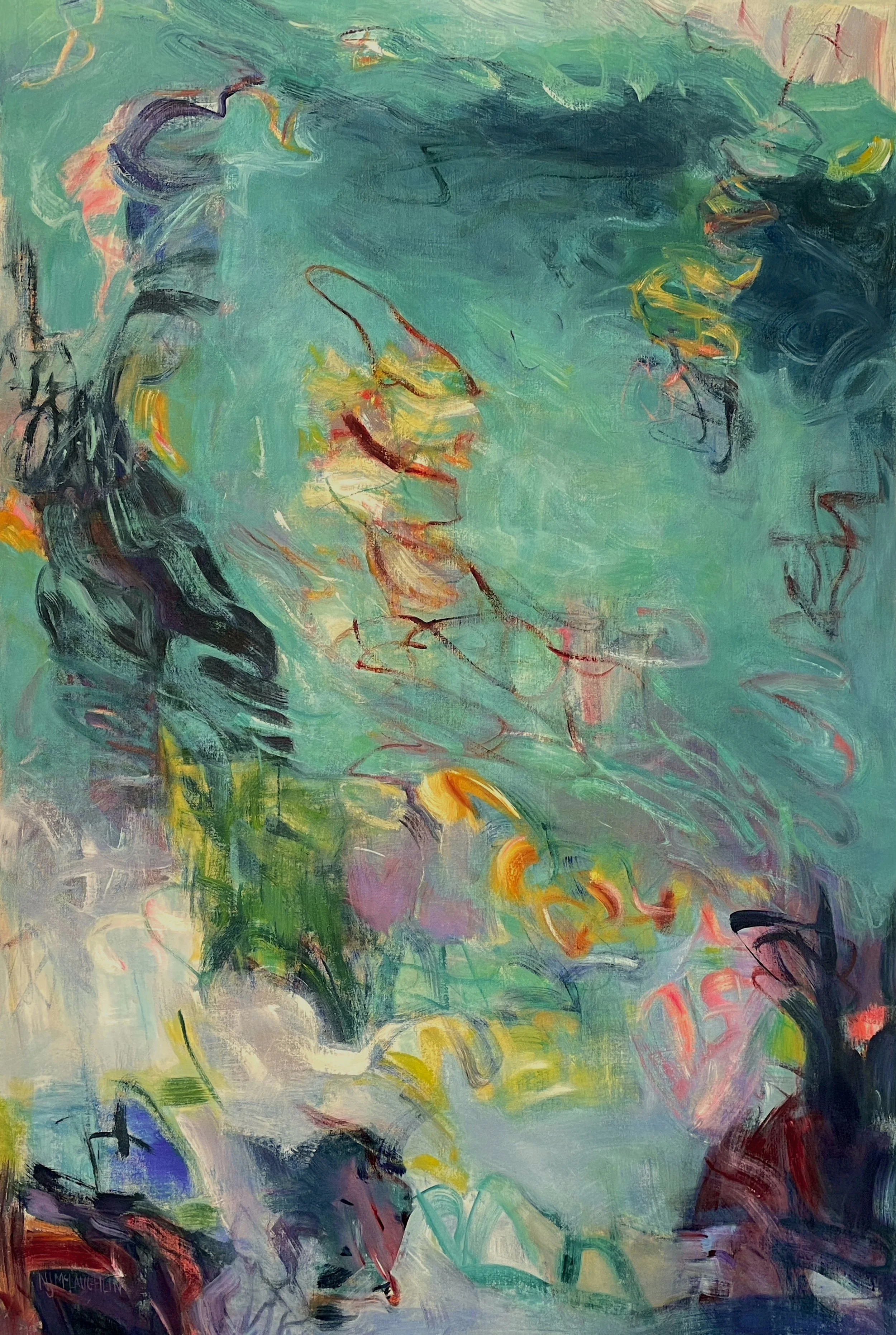Artist Spotlight - Giora Carmi
Biography
Born in Israel in 1944, a second son. Later a sister was adopted into the family.
Grew up in a small village called Kfar Malal.
Lost his father who was killed while fighting in Israel’s War of Independence (1948).
Married in 1965. Later had two daughters and one son.
Fulfilled his obligatory army service. Had a series of spiritual experiences throughout life.
Discovered his ability to “read” art. Discovered Zen.
Studied Graphic Design at Bezalel Academy of Art and Design in Jerusalem.
Was a freelance graphic designer and illustrator for 14 years.
All I have, 2024, Watercolor gouache and pencil on handmade paper, 21.5 x 21.5 cm
Taught illustration and typography. Wrote and illustrated for the children’s magazine, Pilon.
Came to the US in 1985 where he was a freelance illustrator in NYC for 17 years. Illustrated regularly for The New York Times, The Wall Street Journal, as well as others.
Illustrated, both in Israel and the US, 42 children’s books, two of which he also wrote.
Studied Zen for 12 years with the late Chinese Zen master Shen-yen.
Studied Art Therapy at NYU.
Worked as an Art Therapist for 14 years. Developed a new approach to art therapy while doing two internships in a county jail.
You, 2024, Watercolor Gouache and pencil on handmade paper, 21.5 x 21.5 cm
Later, after further development of the method, wrote the book, “Opening Intuitive Flow Through Artwork”.
Studied the Release Technique, Theta Healing, Reiki, and a few other approaches to human development.
In 2020 he published the illustrated book “Who AM I?”, as a humorous but practical aid to self reflection.
These days he lives in NYC with his partner Anita Gold, where he paints, writes prose, poetry and nonfiction, including the blog “Intuitive Flow” (IntuitiveFlow.org).
Being one, 2024, Watercolor gouache and pencil on handmade paper, 21.5 x 21.5 cm
Artist Statement
All my paintings come with poems that "read" the paintings. It is not a definition-like reading, but open and alive (hopefully), as all art is. Looking at art is like trying to understand your life through beauty.
And I agree: It is the right thing to do. Your individual sense of beauty goes much deeper into the truth than any analysis.
What will be?, 2024, Watercolor gouache and pencil on handmade paper, 21.5 x 21.5 cm
Art making and viewing, when done with awareness of how our sense of beauty is responding, is healing, both psychologically and spiritually. It even has an effect on health.
In the links below you'll find much more elaboration on what I said here, through my writing, interviews and what others wrote about my work.
Lost, 2024, Watercolor Gouache color-pencils pencil, 21.5 x 21.5 cm
Introduction to my book:
PAINTINGS that read my mind & POEMS that read my paintings:
Who? What? Why?
Who is the main character, when I draw and paint, guided only by my individual sense of beauty and truth? Is the painting an expression of my feelings? The feelings are there, but are they the heroes? Is the painter- protagonist the I that I usually believe that I am? The guy who tightly holds on to the story of my life?
No.
The dream, 2024, Watercolor gouache and pencil on handmade paper, 21.5 x 21.5 cm
The hero of the moment is the inner witness, also called awareness. This is what experiences the inner event and what describes it in an improvisation of lines, colors and ultimately the composition. Awareness has to make use of the personality, which is a collection of thoughts, in order to do the actual painting and writing. But the confused personality in this case surrenders itself to the clarity of awareness.
The red stinging stones, 2024, Watercolor gouache and pencil on handmade paper, 21.5 x 21.5 cm
The composition is how individual forces relate to each other in a specific inner event. And when it becomes art, the composition describes not only the relationships in the inner event, but also the realization that this event is part of infinity. The feeling that there is, all around, infinitely more, connects to the event and you will not find a border between them.
The light of hichNever looking with his eyes, 2024, Watercolor gouache and pencil on handmade paper, 21.5 x 21.5 cm
This, I dare say, is the ultimate function of art in our human life. To remind us, experientially, with the help of this inner viewer, as described above, that we are part of endlessness. When the composition does it, we feel awe, and we know that what we are looking at is art.
This view puts the event, no matter how dramatic it is, in its true perspective. It is just an interplay of different energies within an infinity of energetic movements and encounters, acting by universal laws that are not private. It is just the way energies behave. Our thoughts are the drivers of the energies, and when you witness it, you are looking at how you create your own world.
The light of which, 2024, Watercolor gouache and pencil on handmade paper, 21.5 x 21.5 cm
For a world view that is based on what the senses experience, the thinking that ensues, and the ideas that are formed, finding out that something else is running the show is hard to grasp. But when we do grasp it, we become free of the limited ways in which we understand our life, and this is the beginning of healing. We start to feel good in a more fundamental way than how our ideas of relative good and bad can ever offer. This is what this process of painting and writing does. It takes one, gracefully, through the steps of becoming free of the relative and narrow way we usually explain our life to ourselves.
To feel good together, 2024, Watercolor gouache and pencil on handmade paper, 21.5 x 21.5 cm
In this book I used all the paintings and poems that I wrote during a period of four months. I did not skip any (except for one, when I could not find the painting), so that the reader would be able to follow small changes in me that occurred while doing the process.
Each painting on the left side is interpreted by the poem that is on the right.
Psychologically speaking
What is a psychological problem?
It is a belief that creates unhappiness.
A little trip, 2024, Watercolor gouache and pencil on handmade paper, 21.5 x 21.5 cm
When there is an event that triggers an unhappy belief we have unhappy thoughts and we feel bad. Some unhappy beliefs are not big problems. But others are. They come up many times, they are easily provoked and they effect behavior, thus adding other layers of unhappiness.
When a person paints, many memories are touched and some of the unhappy beliefs are provoked. In these places in the art the flow is interrupted and these places can be detected. The painter can know that when they painted these non- flowing parts, they did not feel good.
Ripples, 2024, Watercolor gouache and pencil on handmade paper, 30 x 21.5 cm
The process of painting while being guided only by a sense of beauty or by curiosity or playfulness, makes the person feel increasingly better as they paint. When they look at the problematic places in the art, they are still in the state of feeling good. This makes the detection of bad feelings easy. This direct experience of how feeling bad feels, in comparison with feeling good, becomes the motivation for self change.
Thin air, 2024, Watercolor gouache and pencil on handmade paper, 21.5 x 21.5 cm
Relating to the painting with words further clarifies what feels bad and what feels good and therefore assists in giving power to the choice to change behavior. In this way, working with this approach, the person enters into a self-motivated process of changing his behavior towards what feels better to them. Those bad-feeling thoughts that are more problematic show up many times. With every choice to feel better the painter makes, they become weaker.
This method is a very powerful way to evolve and become freer of bad-feeling thoughts. The process feels good along the way. It is not necessary to feel bad in order to evolve.
Everything is possible now, 2024, Watercolor gouache and pencil on handmade paper, 21.5 x 21.5 cm
The meditation connection
There is a meditation that concentrates on the question: Who am I?
The making of the paintings and poems of this book is a good way to practice this meditation. I have been using this method for many years. I hope this book will encourage you to try this method too.
A review of my work in this magazine:
https://www.contemporaryartcuratormagazine.com/home-2/giora-carmi-review
A written interview with me in this magazine:
https://www.contemporaryartcuratormagazine.com/home-2/giora-carmi-interview
A video interview about my healing art process:
https://www.youtube.com/watch?v=4dAo7utIRFQ&t=8s&pp=ygULZ2lvcmEgY2FybWk%3D
Another video interview about the healing aspect of art:
https://www.youtube.com/watch?v=m98OtfVL7bg&t=9s&pp=ygULZ2lvcmEgY2FybWk%3D
About me on AATONAU blog:
https://aatonau.com/giora-carmi-a-life-shaped-by-art-and-resilience/
My Blog, in which I post a lot of my paintings with writing about them.
Pain jazz, 2024, Watercolor gouache and pencil on handmade paper, 21.5 x 21.5 cm
